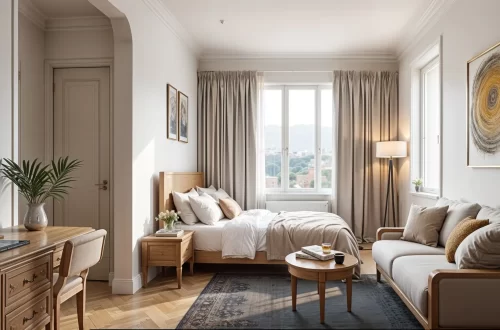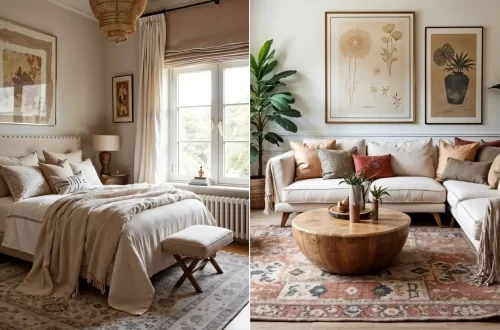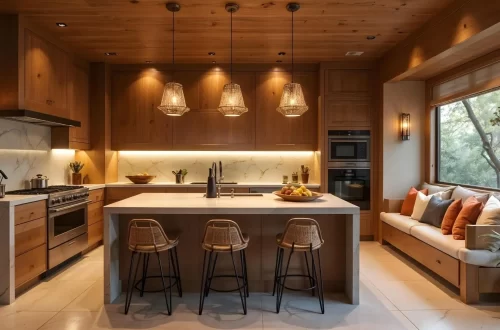Eclectic maximalism is that delicious middle ground between curated chaos and visual feast. It’s a vibrant space, with a rich variety of colors, patterns, and textures that somehow all get along. A home that’s full of life and never predictable.
Personally, I’ve always loved this style. Probably because it lets me showcase my favorite African pieces—Bamileke stools, woven baskets, brass accents—right alongside a sleek modern sofa. To me, that’s what design is about: surrounding yourself with the pieces you love most, and doing it in style.
This post contains affiliate links. I may earn a small commission if you purchase through them, at no extra cost to you.
Jump to:
- Eclectic Interiors vs. Maximalist Interiors
- 5 Failproof Steps to Master Eclectic Maximalism
- Why Eclectic Maximalism Works
Eclectic Interiors vs. Maximalist Interiors
To understand eclectic maximalism, you need to know what makes both styles tick.
Eclectic Style at a Glance
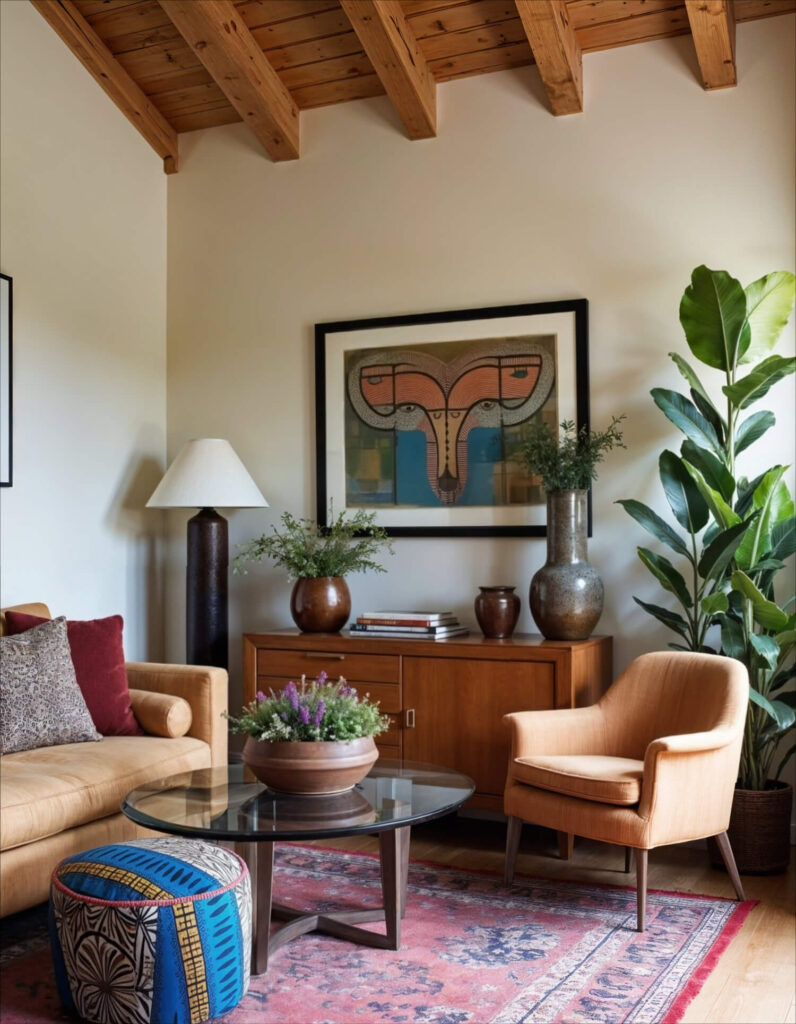
- A playful mix of furniture and decor from different periods.
- Contrasts that still feel balanced, thanks to one unifying thread.
- Layers of patterns, textures, and materials.
- Carefully chosen pieces to avoid total chaos.
- A strong dose of personal expression.
You May Also Like: Eclectic Home Design Done Right: Chic, Unique, Unexpected
Maximalist Style at a Glance
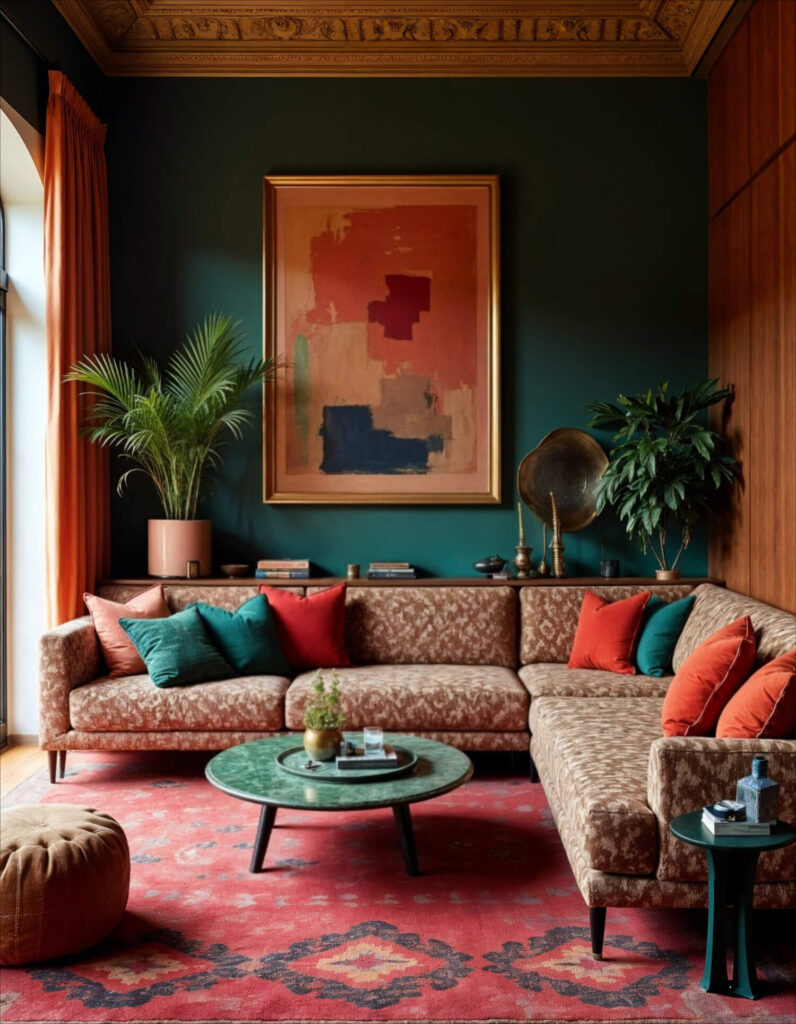
- A “more is more” philosophy—layers upon layers of decor.
- Loud, fearless use of bold colors and patterns.
- Oversized pieces and statement walls.
- Collections proudly displayed instead of tucked away.
- A dynamic, high-energy vibe.
You May Also Like: Designing a Creative Interior in 7 Fun Ways
How To Make It Eclectic Maximalism
- Eclectic = controlled variety.
- Maximalism = unapologetic abundance.
Combine them, and you get eclectic maximalism: harmony and excess, walking hand in hand.
5 Failproof Steps to Master Eclectic Maximalism
Step 1. Build a Bold Color Palette
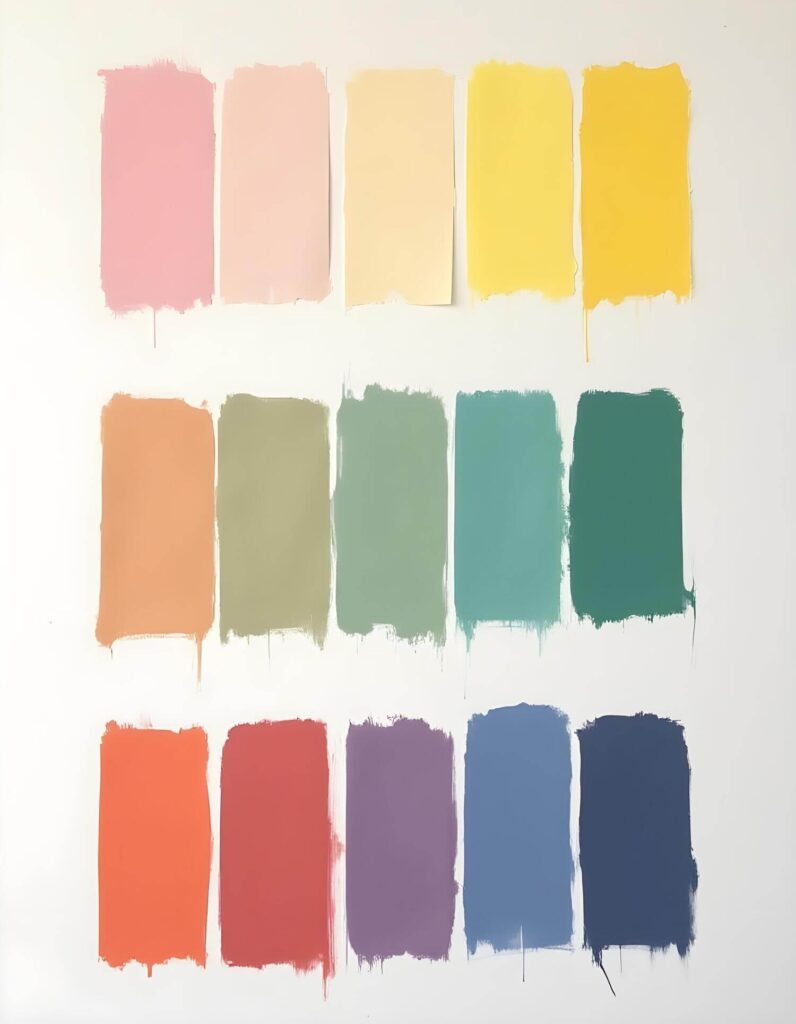
You can’t do maximalism without bold colors—it’s like trying to make jollof rice without spice. Doesn’t work.
For eclectic maximalism, start by picking three to five vivid colors that will anchor the room. To make sure things don’t spiral into chaos, lean on the 60-30-10 rule:
- 60% of the space in your dominant shade,
- 30% in your secondary shade,
- 10% reserved for playful accents.
That accent portion can be one shade or scattered across two or three hues. Pink, yellow, teal? Sure. Green, terracotta, purple? Why not. Maximalism thrives on combinations that shouldn’t work but somehow do.
And if your brain goes blank when faced with the paint aisle, mood boards and Pinterest are your friends.
Step 2. Go Big with Color Drenching or Wallpaper
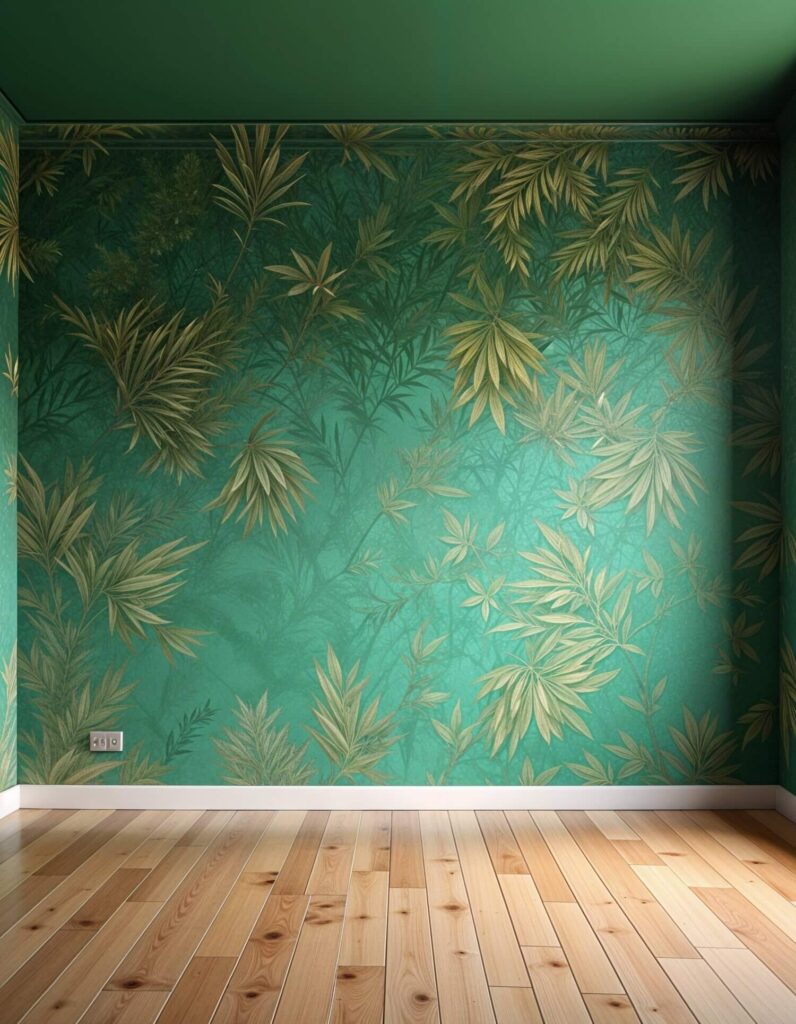
Once you’ve got your palette, it’s time to stage the drama. This step leans heavier on maximalism than eclecticism.
Color drenching means painting the walls and ceiling in your dominant shade for full immersion. Imagine being wrapped inside a velvet box of emerald green—intense, yes, but unforgettable.
If you’d rather keep some variety, wallpaper does wonders. Pick a pattern in your dominant color for the walls, then paint the ceiling to match. It’s bold, it’s fearless, and it creates the perfect backdrop for all the eclectic pieces you’ll be layering on top.
Our top pick: a unique wallpaper inspired by adire fabrics from Nigeria
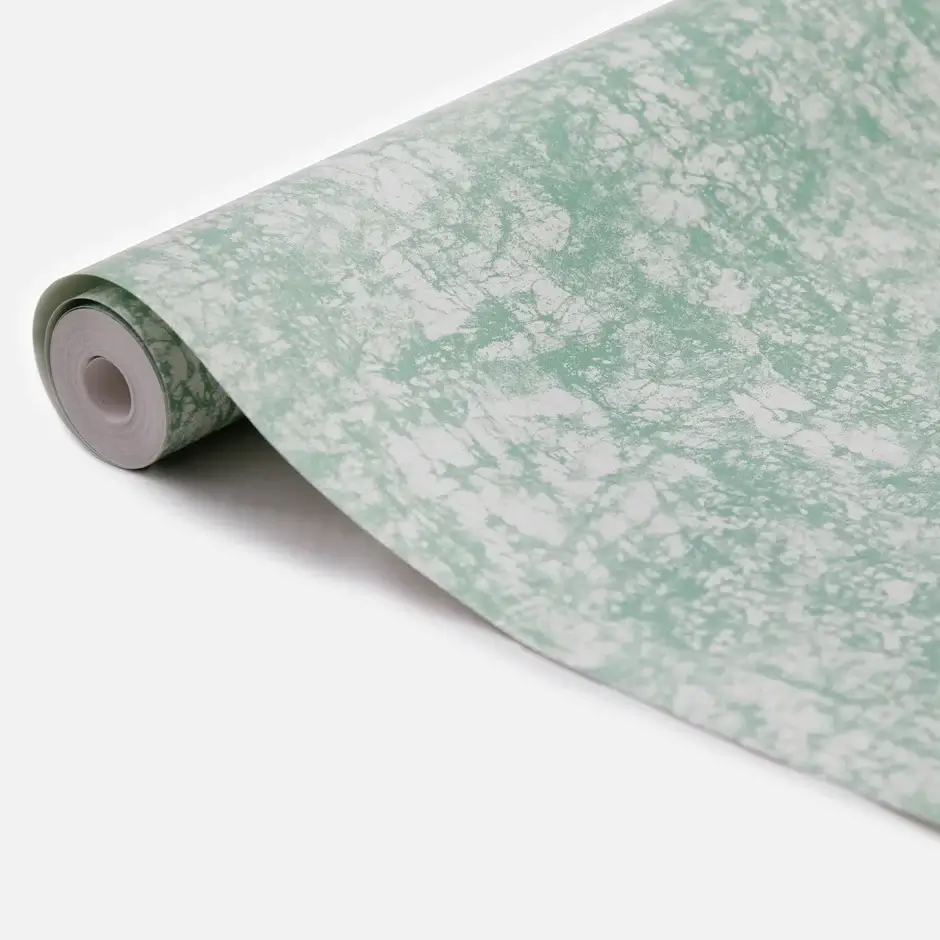
Step 3. Anchor the Room with Large Statement Pieces
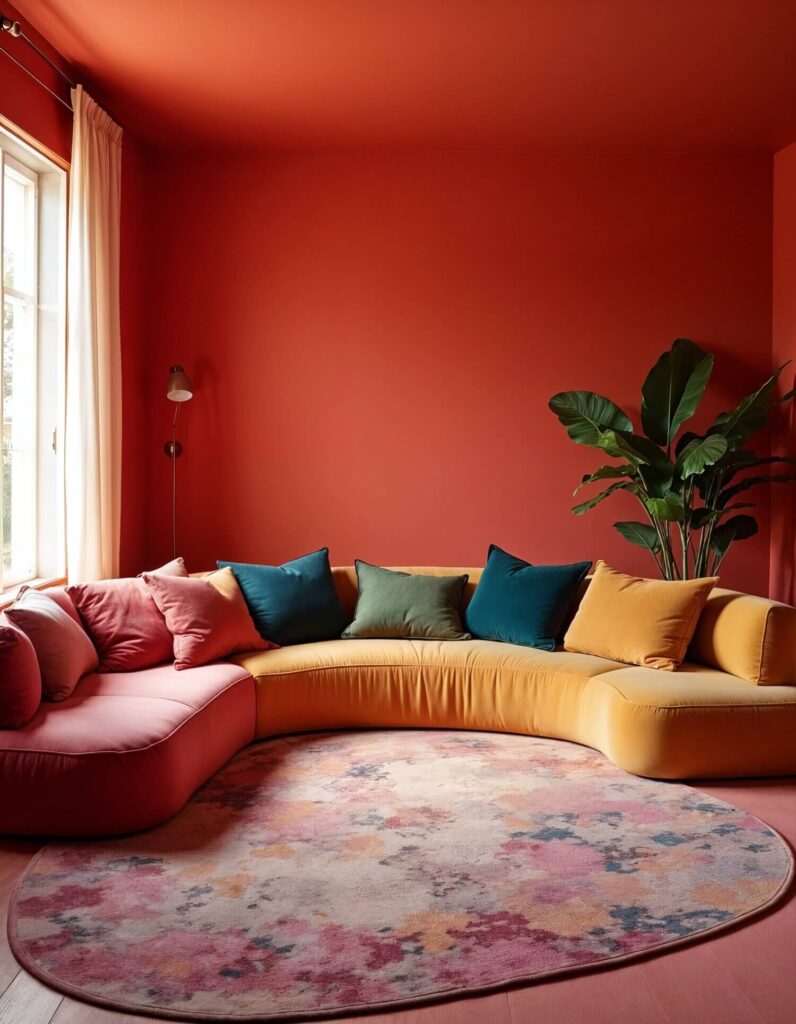
No matter which room you’re designing, your larger pieces set the tone. Rugs, sofas, beds, or dining chairs—these are your stage actors.
- For your living room: the rug, sofa, and accent chairs.
- In the bedroom: the bedspread and headboard (go majestic here).
- And to ignite your dining room: the chairs and the pendant lighting above the table.
These anchors are where eclectic maximalism comes to life. Pick them in your main and secondary colors while keeping that 60-30 balance.
Our top pick: this bamboo silk rug with its explosion of color
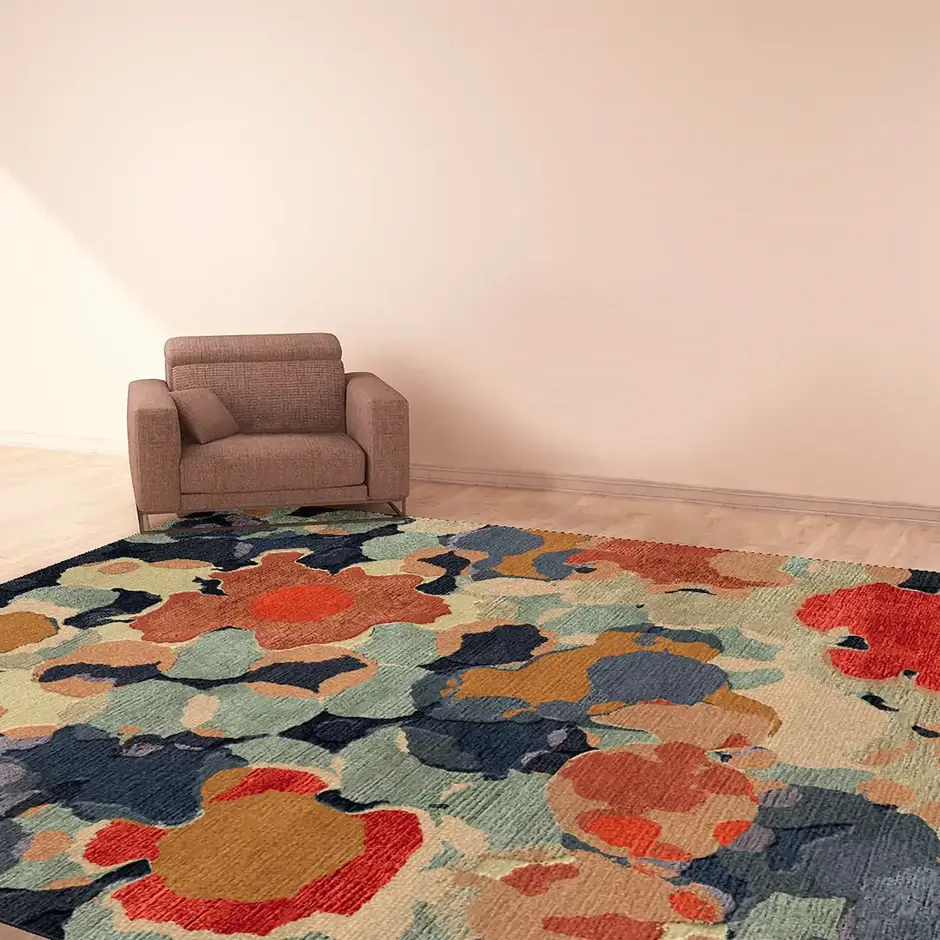
Step 4. Layer Patterns, Textures, and Pops of Color
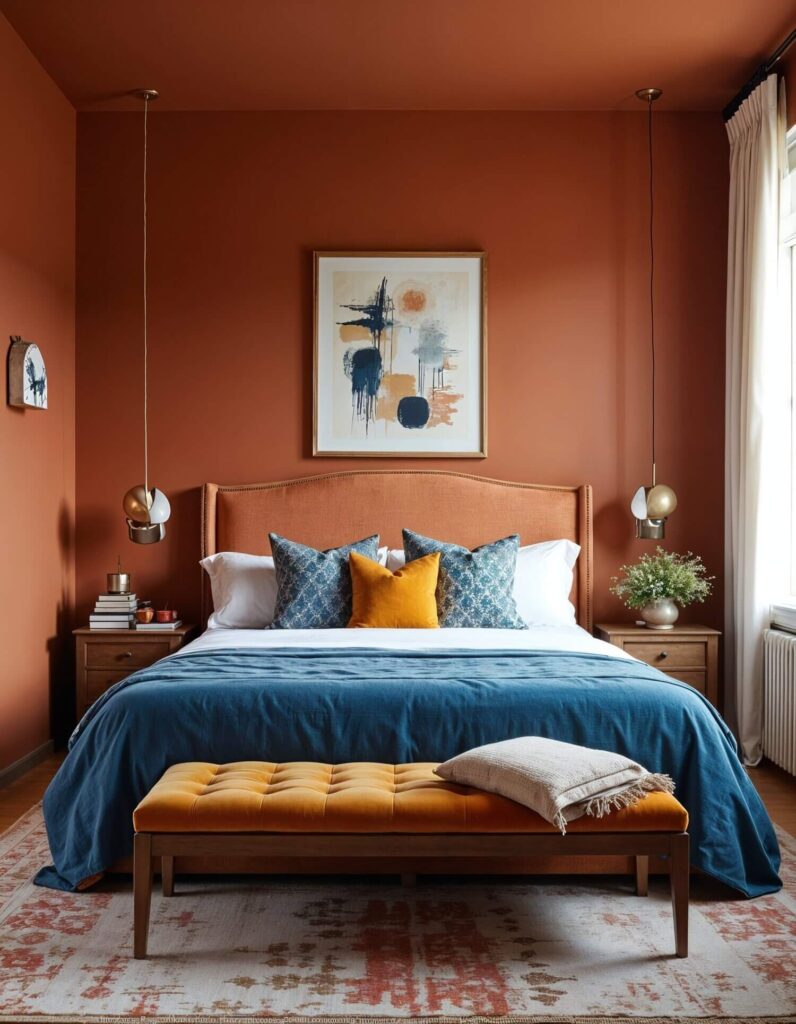
This is the part where eclectic maximalism get juicy. Bringing in varied, interesting decor pieces through 3 core pillars:
- Textures: They’re the secret ingredient. Mix cotton, linen, velvet, raffia, clay, carved wood—smooth next to rough, shiny next to matte. African crafts shine here: a woven Ugandan basket or a carved stool adds tactile richness that’s hard to beat.
- Colors: Use your accent shades on throws, pillows, art, or vases. Don’t keep it too matchy-matchy. Scatter tones across the room. For instance, if pink is one of your accents, bring in soft blush, hot fuchsia, and everything in between.
- Patterns: They’re instant energy. Stick to one pattern family—geometric or organic—to avoid chaos. And don’t dump them all in one place. Scattering them from rug to ceiling is key, so the eye dances through the room instead of staring at one busy corner.
Our top pick: this fun tropical throw pillow
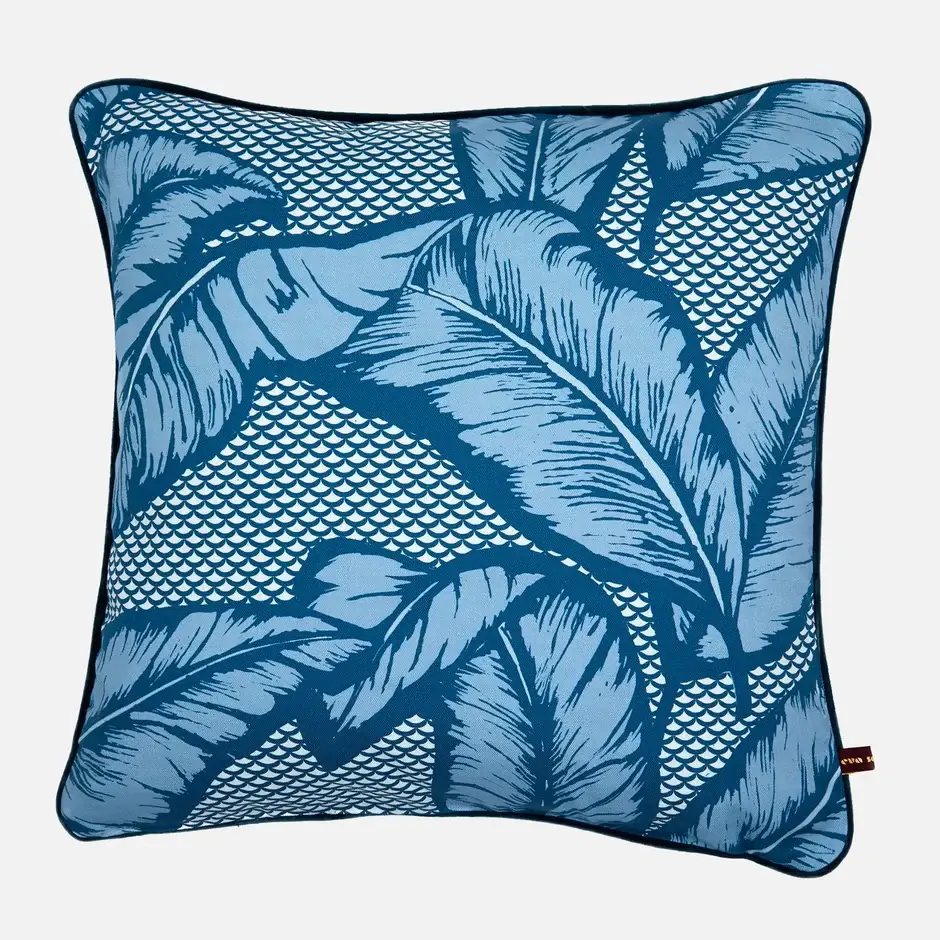
You May Also Like: How to Use African Print Textiles for an Exciting Home
Step 5. Show Off All Your Personal Collections
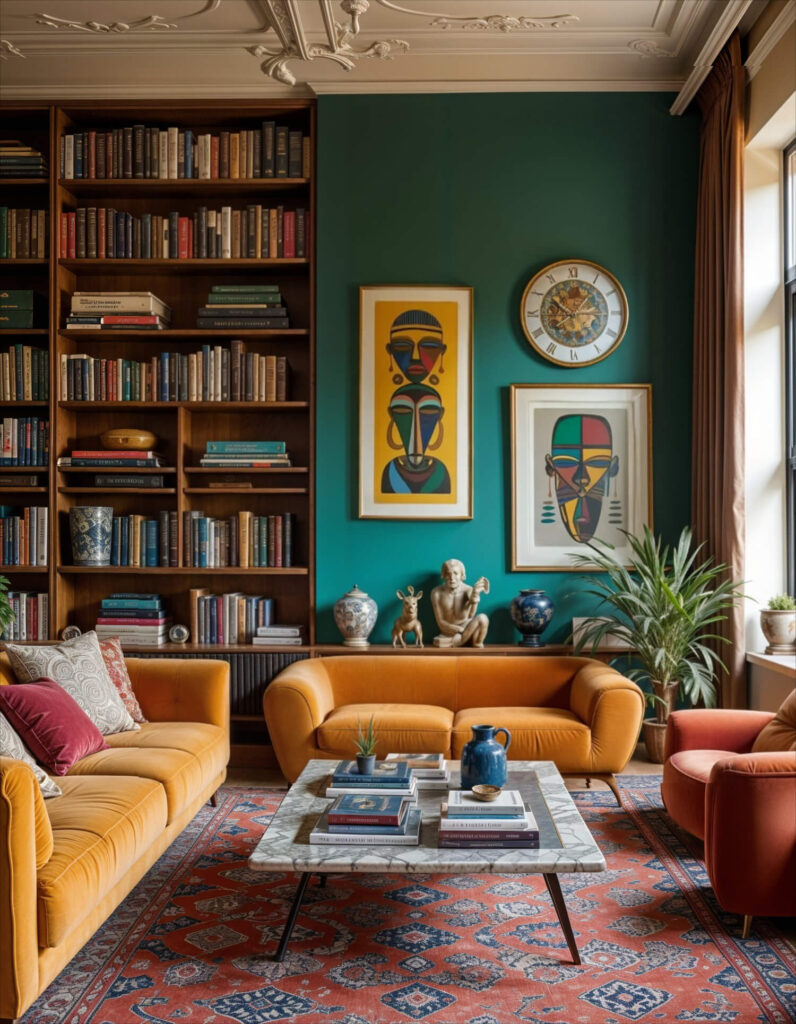
An eclectic home should feel personal. A maximalist home should feel abundant. Put the two together, and your collections become the soul of your space.
Books, vintage lamps, travel finds, quirky art—put them all out. I do this with my African masks and Namji dolls, mixing them with books and small artworks I’ve gathered along the way. It makes the room feel like a joyful gathering rather than a museum-style showroom.
BONUS: Don’t Forget the Greenery
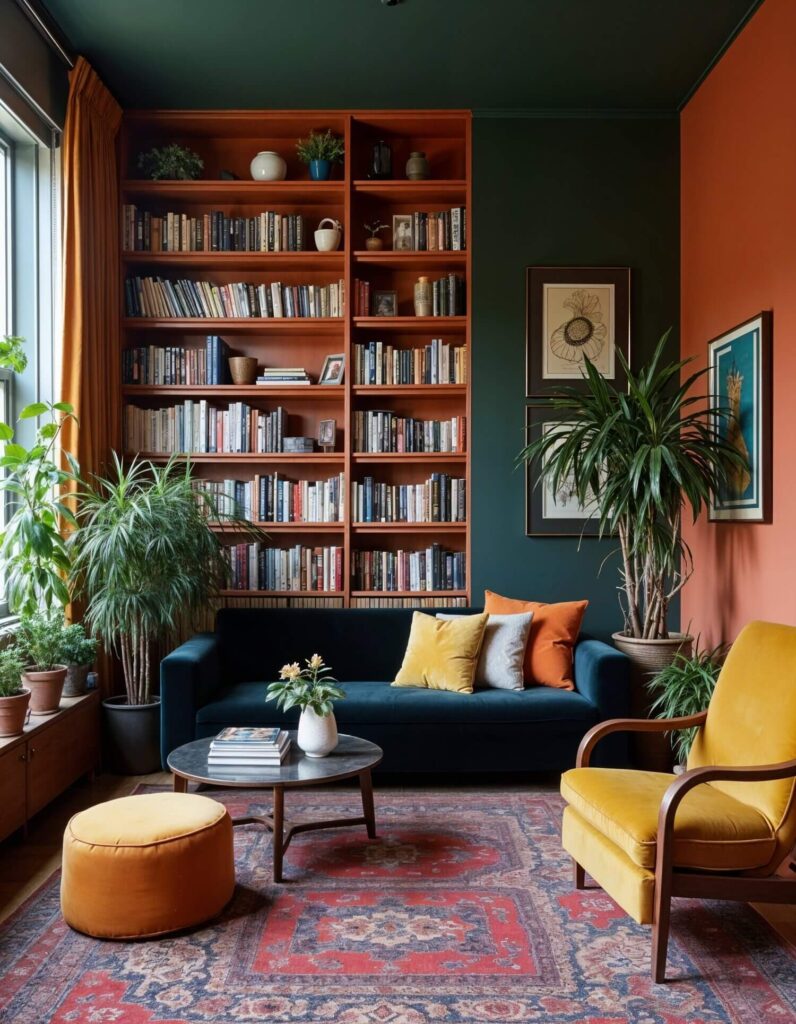
Plants are the unsung heroes of eclectic maximalism. Big ones, small ones, trailing ones—scatter them everywhere. They freshen up bold spaces and soften all that pattern play. Plus, plant pots are another chance to sneak in expressive designs.
Why Eclectic Maximalism Works
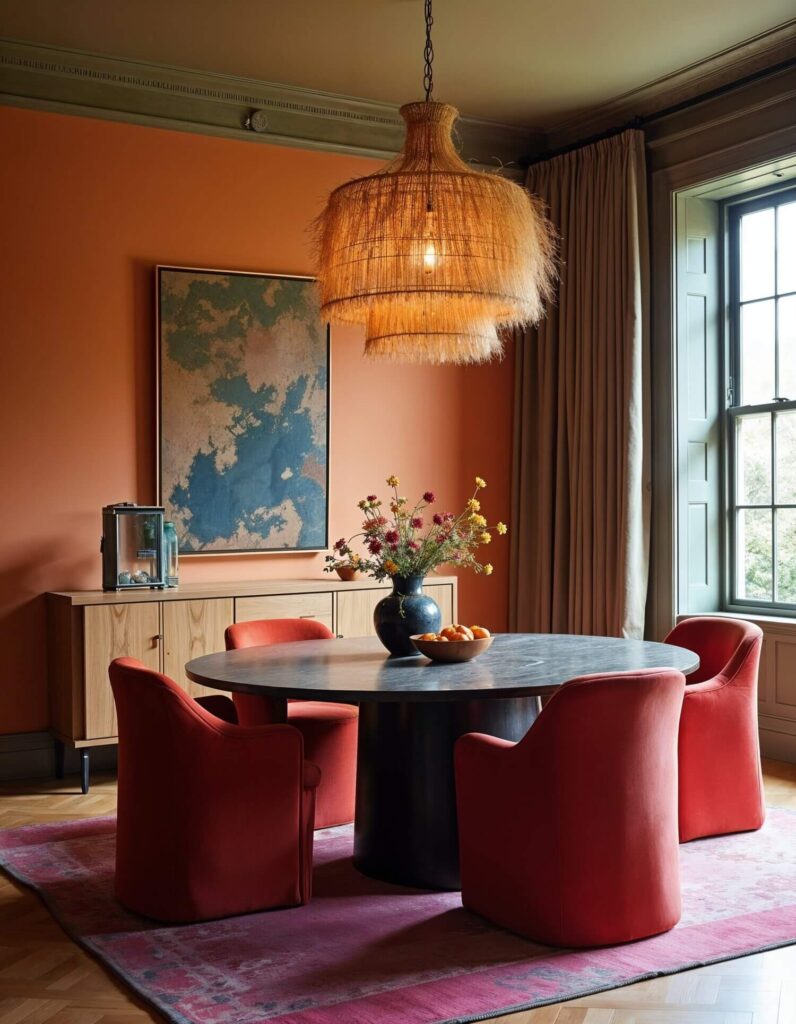
This style thrives because it balances two opposing ideas: intention and abundance. You get to be wildly creative without falling into complete chaos, for a home that feels layered, energetic, and personal.
And when you slip in African finds like I love to do—say, a raffia pendant or a Bamileke stool—the room suddenly feels less “Pinterest board” and more cultured. That lived-in edge is what eclectic maximalism is all about.
Eclectic maximalism isn’t about following rules—it’s about bending them until they suit you.
Use color with confidence, choose bold anchors, layer patterns and textures, and most importantly, surround yourself with pieces that matter to you.
Because at the end of the day, your home should feel like you. And if “you” just happens to be a little dramatic, colorful, and eclectic? Even better.




